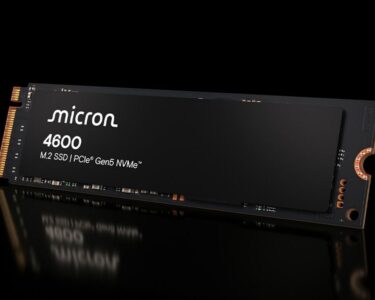A new treatment for hot flashes brought relief and a better night’s rest for women experiencing these disruptive symptoms during menopause.
Two phase 3 clinical trials compared the drug elinzanetant with a placebo at two timepoints. The drug subdued hot flashes quickly: By the fourth week, a majority of those taking the drug reported at least a 50 percent reduction in frequency.
By week 12, more than 70 percent taking elinzanetant, compared with more than 40 percent on placebo, experienced that drop in hot flash frequency, researchers reported August 22 in the Journal of the American Medical Association. Participants on elinzanetant also reported significantly improved sleep compared with those on placebo at the 12-week mark.
“Elinzanetant is a promising new nonhormonal treatment,” says Talia Sobel, a women’s health internist specializing in menopause at Mayo Clinic in Scottsdale, Ariz., who was not involved in the trials.
After the first 12 weeks, the trials switched placebo users to the drug. Studies of treatments for hot flashes often show a placebo effect, says JoAnn Pinkerton, a gynecologist specializing in menopause at the University of Virginia Health System in Charlottesville. This could be due in part to the therapeutic rituals of the trials, researchers have proposed.
“We wanted to see if there was an additional effect beyond the placebo,” Pinkerton says. “And indeed, there was.” By 26 weeks, 82 percent of the participants who took elinzanetant the entire time, and more than 84 percent of those switched from the placebo, reported at least a 50 percent reduction in hot flash frequency. The finding that more than 80 percent of all participants benefited, regardless of whether they began on or switched to the drug partway through the trials, “is pretty dramatic,” Pinkerton says.
In the transition to menopause, which signals the end of ovulation and menstrual periods, the ovaries’ production of the sex hormones estrogen and progesterone fluctuates and eventually stops. During the lead-up to menopause and for years after, people can experience a range of burdensome symptoms, including hot flashes, night sweats, disturbed sleep, changes in mood, loss of concentration, vaginal dryness and urgency with urination.
Up to 80 percent of women experience hot flashes at some point during the menopausal transition, and the symptoms can continue for many women for more than seven years. Hot flashes are thought to be due to a narrowing of the body’s range of temperature sensitivity, such that a small increase in body temperature can feel like blast of heat. The body’s exaggerated cooling response can trigger excessive sweating and a flushed appearance from dilated blood vessels.
Hormone therapy — estrogen with progesterone or estrogen alone — is the most effective treatment for hot flashes and menopausal symptoms that affect the vagina and the urinary tract (SN: 1/9/18). The North American Menopause Society reaffirmed in 2022 that, absent certain health conditions, hormone therapy is a safe choice for women who are younger than 60 or who begin therapy within 10 years of the start of menopause. Hormone therapy also protects against bone loss, which occurs with the drop in estrogen with menopause.
There is a need for nonhormonal treatments, too. For women older than 60 or those more than 10 years out from menopause, hormone therapy is tied to a higher risk of coronary heart disease, stroke and blood clots. People who’ve had estrogen-sensitive breast cancer, prior blood clots, a history of stroke, severe endometriosis and migraines with aura are among those who wouldn’t be good candidates for hormone therapy, Pinkerton says.
Research focusing on a group of neurons in the hypothalamus — called KNDy neurons — that are involved in temperature regulation has led to the development of new nonhormonal treatments for hot flashes. As estrogen levels decline, these neurons grow and become overactive, which stimulates production of certain chemical messengers. One of the messengers binds to a receptor found on KNDy neurons and on nearby thermoregulatory neurons, which appears to spur hot flashes.
A drug called fezolinetant, which blocks that receptor, received approval from the U.S. Food and Drug Administration in 2023. The new drug, elinzanetant, targets that same receptor, but also interferes with another receptor displayed by KNDy neurons that may have a role in insomnia.
The participants in the two phase 3 clinical trials for elinzanetant were post-menopausal women 40 to 65 years old having 50 or more moderate to severe hot flashes during the course of a week. Headache and fatigue were the most commonly reported side effects by participants taking the drug compared with those on placebo. There is a 52-week trial of elinzanetant assessing longer-term safety, while another trial is looking at how well the drug works for women receiving therapy for hormone-positive breast cancer (SN: 5/3/23).
Many women experiencing hot flashes and other bothersome symptoms of menopause aren’t getting sufficient or appropriate treatment, Sobel says. “There are safe and effective options, both hormonal and nonhormonal, that can help improve their symptoms and quality of life….I encourage women to find a trusted clinician who is trained in menopause management.”





